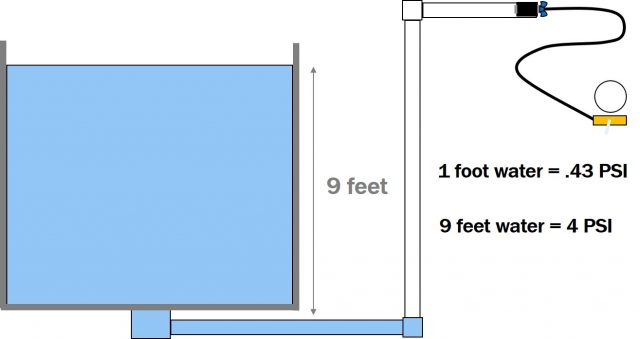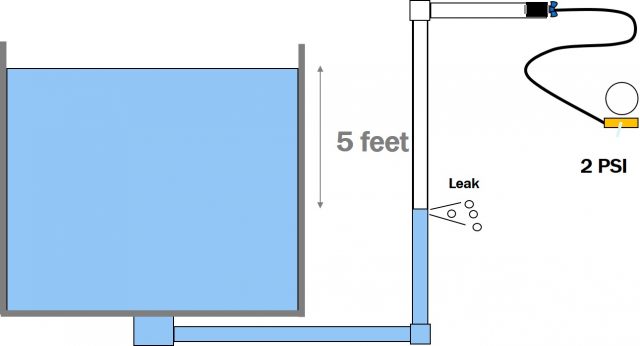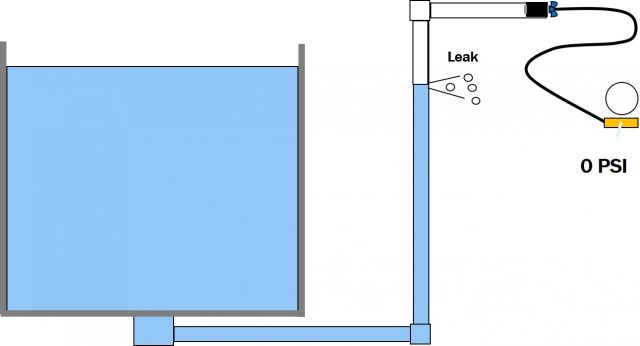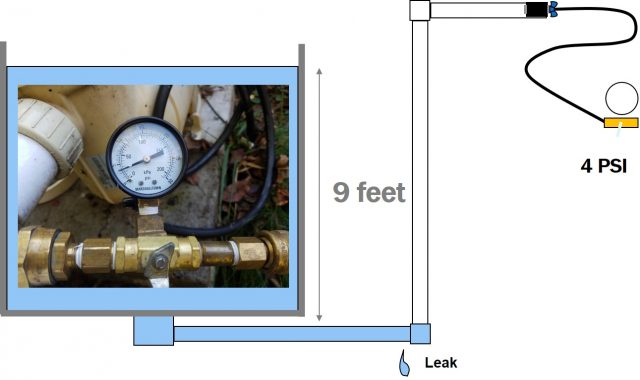While plugging the main drain is the most accurate way to pressure test the main drain line, if you want to avoid getting in the pool, it is possible to identify a problem in the upper part of this plumbing by using a technique called an Air Lock Test. This test takes advantage of the fact that the water above the main drain in the deep end of the pool produces a measurable amount of pressure that acts as a “plug” to an air filled main drain line.
After pressure testing the rest of the plumbing lines to ensure they are sound, induce air into the equipment end of the main drain line until you see it bubble out of the main drain. Then, close the valve on your pressure tester. Assuming the main drain is under about 9′ of water, the water column above it should provide 4 psi of pressure on the trapped air within the line. A pressure drop below 4 psi is an indication of a leak somewhere in the upper section of the plumbing. If the depth of the main drain you’re testing is different than 9′, the pressure the water puts on the air lock can be calculated at .43 psi per foot of water.

If there is a leak in the line in the section above the bottom of the pool, the amount of pressure loss can be used to indicate where in the line that leak is. Pressure will drop quickly until water reaches the location of the leak, at this point even though water is escaping from the leak, air will be trapped and held at a pressure representing the difference between the leak level and the water level of the pool. So, if you see that you pressure quickly drops to 2 psi, it’s likely that there’s a leak in the main drain line somewhere between 4′ – 5′ under the water level of the pool.

If there is a leak in the section of the line at or above the water level of the pool, you’ll see a quick drop to 0 psi.

A leak in the section of plumbing under the pool shell will not be indicated from this test due to the fact that the air is still supporting the full column of water in the pool. So, if a leak is still suspected in the main drain line, it will have to be inspected by fully pressurizing the line with a plug in the main drain.


